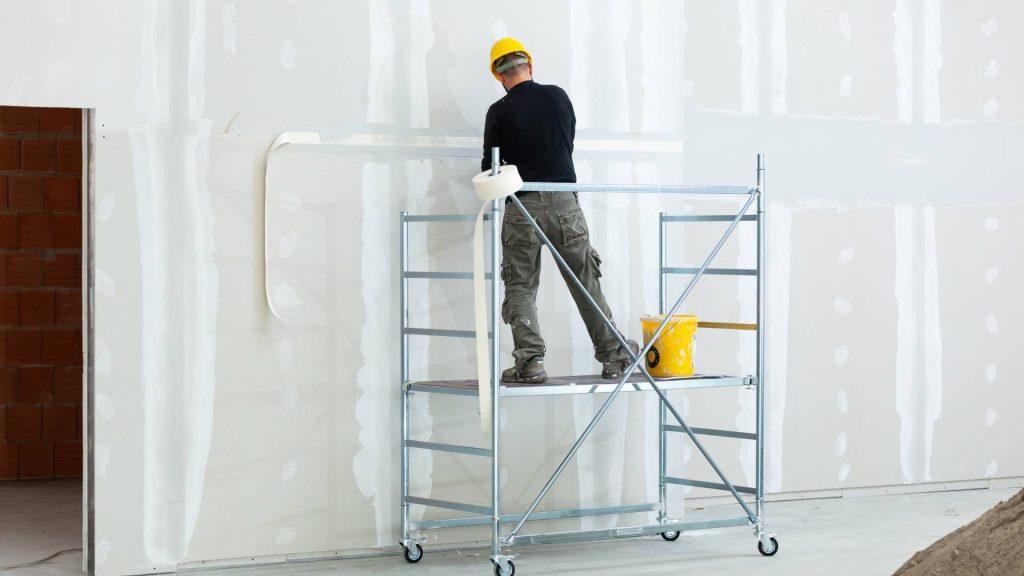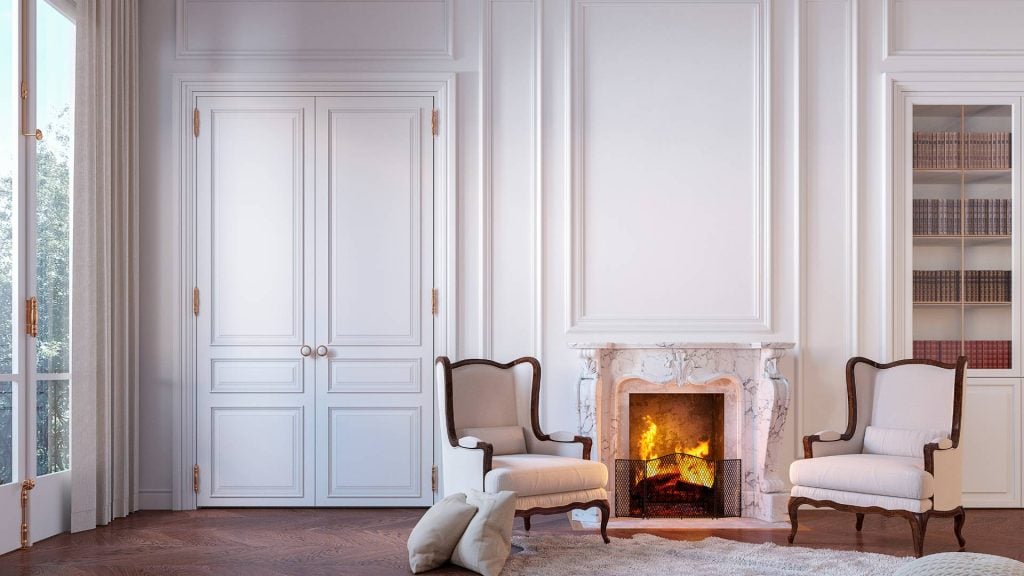Adding decorative moulding to plaster walls is an effective way to enhance the aesthetic appeal of any room. Whether you’re working with the traditional charm of older plaster walls or modern plaster finishes, moulding provides a stylish and timeless design element. This comprehensive guide covers everything you need to know about decorative moulding for plaster walls, from preparation to installation, ensuring a polished finish that enhances the beauty of your space.
By the end of this guide, you will have all the knowledge required to successfully install moulding, transforming your plaster walls with elegance and functionality.
Let’s Get Straight To The Point
Adding decorative moulding to plaster walls enhances the aesthetic appeal and value of your home. Common types of moulding include crown, baseboard, chair rail, and picture rail, each serving different design purposes. Before installation, prepare the plaster walls by repairing cracks, cleaning, and priming.
Choose the right material (wood, polyurethane, plaster, or MDF) based on the room’s needs and the desired look. Proper installation involves measuring, cutting, applying adhesive, securing with nails, and finishing with paint. Moulding not only adds elegance but also provides practical benefits like protecting walls from damage. The cost varies depending on the material and style chosen.
What Is Decorative Moulding for Plaster Walls?
Decorative moulding for plaster walls is a design feature installed along the edges of the wall to enhance the room’s overall look. Whether installed along the ceiling, floor, or mid-wall, moulding adds architectural detail, turning a basic space into a visually appealing environment. There are various types of decorative moulding you can use for plaster walls, such as crown moulding, baseboard moulding, chair rail moulding, and picture rail moulding, each offering different aesthetic and functional benefits.

Types of Decorative Moulding for Plaster Walls
When enhancing plaster walls with moulding, you’ll need to choose the right type based on your space and design preferences. Here are some popular plaster wall moulding ideas to consider:
-
Crown Moulding
- Installed where the wall meets the ceiling, crown moulding for plaster walls adds height and elegance to any room. It makes the ceiling appear higher and adds a stately, finished look.
-
Baseboard Moulding
- Baseboard moulding for plaster walls is installed along the bottom of the wall to protect it from scuffs and damage. It also helps cover any gaps between the wall and flooring, framing the room beautifully.
-
Chair Rail Moulding
- Positioned partway up the wall, chair rail moulding for plaster walls adds protection from furniture damage while allowing for creative design features, such as two-tone paint or wallpaper.
-
Picture Rail Moulding
- Traditionally used to hang artwork without damaging the plaster, picture rail moulding for plaster walls offers both functionality and design appeal. It is installed higher on the wall and is perfect for showcasing artwork without causing damage.
What Are the Best Moulding Materials for Plaster Walls?
Choosing the right moulding materials for plaster walls is crucial to achieving the desired look and ensuring durability. Here are some options to consider:
- Wood Moulding for Plaster Walls: A traditional and versatile choice, wood moulding for plaster walls can be stained or painted and is ideal for homes with classic designs.
- Polyurethane Moulding for Plaster: Lightweight and moisture-resistant, polyurethane moulding is an excellent option for areas with high humidity, such as kitchens and bathrooms.
- Plaster Moulding: For intricate designs, plaster moulding for plaster walls offers a high-end, detailed finish and is often used in period homes.
- MDF (Medium Density Fibreboard): Affordable and easy to paint, MDF is a popular choice for modern homes, offering a smooth finish at a budget-friendly price.
Preparing Plaster Walls for Moulding Installation
Proper preparation is key to a successful plaster wall moulding installation. Here are the essential steps for preparing your plaster walls before moulding installation:
-
Inspect for Damage
- Check for any cracks, holes, or loose plaster on the wall. Tap the wall gently to identify soft or hollow spots that may need repair. Look for signs of moisture or bubbling, as these issues must be addressed before proceeding with repairs.
-
Repairing Plaster Walls Before Moulding
- Use a utility knife to clean cracks or holes in the plaster. Fill them with plaster filler or patching compound, and once the filler dries, sand the area smooth. This ensures that the repaired surfaces blend seamlessly with the rest of the wall.
-
Cleaning and Priming
- Thoroughly clean the wall to remove dust, dirt, and grease. After cleaning, apply a coat of primer to ensure proper adhesion of the moulding.
-
Marking for Installation
- Use a level to mark where the moulding will be installed. These guidelines will ensure the moulding is straight and aligned with other features in the room.

How to Install Decorative Moulding on Plaster Walls
Now that your plaster walls are prepared, it’s time to install the moulding. Here are the steps for plaster moulding installation:
Tools and Materials Needed:
- Measuring tape
- Miter saw
- Level
- Construction adhesive
- Finishing nails
- Nail gun or hammer
- Caulk and caulk gun
- Sandpaper
- Paint and brush
Installation Steps:
- Measure and Cut the Moulding
- Use the measuring tape to determine the length of each wall and cut the moulding to size with a miter saw. Ensure you make precise cuts for corners.
- Dry Fit the Moulding
- Before applying adhesive, dry-fit the moulding on the wall to ensure a proper fit and make any necessary adjustments.
- Apply Adhesive and Secure with Nails
- Apply a bead of construction adhesive to the back of the moulding. Press the moulding firmly against the wall, then secure it with finishing nails spaced evenly (12 to 16 inches apart).
- Caulk the Gaps
- Fill any gaps between the moulding and wall with caulk for a seamless look.
- Sand and Paint the Moulding
- Sand the edges once the caulk is dry, and then apply a coat of paint to the moulding for a polished finish. Use a high-quality brush for even coverage.
Plaster Wall Moulding Installation Tips
To ensure your plaster wall moulding installation is successful, follow these expert tips:
- Use a Level: Continuously check with a level to ensure that the moulding is straight and aligned properly.
- Handle Corners Carefully: When cutting moulding for corners, use a miter saw to make precise cuts, or consider using a coping saw for a tighter fit.
- Space Nails Evenly: Secure the moulding with nails placed every 12 to 16 inches to ensure it stays in place.
Cost of Decorative Moulding for Plaster Walls
The cost of decorative moulding for plaster walls can vary depending on factors such as the type of moulding, material, and room size. On average, traditional wood moulding tends to be more expensive than alternatives like MDF or polyurethane. However, for those with a higher budget or looking for intricate designs, plaster moulding for plaster walls may be the ideal choice.
Conclusion
Adding decorative moulding to plaster walls is an excellent way to enhance the aesthetic appeal and functionality of your space. From selecting the perfect moulding materials to ensuring proper preparation and installation, each step plays a key role in achieving a professional, polished finish. Whether you’re looking to install crown moulding on plaster walls or baseboard moulding for plaster walls, following the proper steps will ensure a successful installation that transforms your space.
By carefully choosing your moulding type and material and following the right plaster moulding installation techniques, you can enhance your home with a stylish and lasting feature.
Frequently Asked Questions
What Types Of Decorative Moulding Are Best For Plaster Walls?
For plaster walls, it’s ideal to choose moulding materials that are lightweight yet durable, such as polyurethane or high-density foam. These materials are easier to install and less likely to cause damage to the existing plaster compared to heavier wood mouldings. Additionally, they can be intricately designed, making them suitable for both modern and traditional interiors.
How Do I Prepare My Plaster Walls Before Installing Moulding?
Preparing your plaster walls involves several key steps: First, repair any cracks or damage to ensure a smooth surface. This may include filling cracks with plaster or a flexible filler and sanding down uneven areas. Next, clean the walls to remove dust and debris, and apply a primer to help the adhesive and moulding adhere more effectively to the surface.
Can I Install Decorative Moulding Myself, Or Should I Hire A Professional?
Installing decorative moulding can be a DIY project if you have the right tools and a basic understanding of carpentry. However, for intricate designs or large projects, it might be beneficial to hire a professional. A skilled installer can ensure that the moulding is cut and fitted perfectly, which is crucial for achieving a polished look, especially in rooms with uneven walls or complex angles.
What Is The Best Way To Cut Decorative Moulding For A Perfect Fit?
To cut decorative moulding accurately, use a mitre saw equipped with a fine-toothed blade. Measure the wall space carefully, and plan your cuts to ensure tight joins, especially at corners. For inside corners, cope cuts are preferable as they allow for the most precise fit. Always measure twice and cut once to avoid wastage of materials.
How Do I Maintain The New Moulding Once It’s Installed?
Maintaining decorative moulding involves regular dusting to prevent the buildup of dirt and debris. For deeper cleaning, use a soft cloth slightly dampened with water and a mild detergent. Avoid harsh chemicals that can damage the finish. Periodically check for any gaps or cracks in the caulking, especially in areas with high humidity, and reapply caulk as necessary to keep the joints sealed and looking fresh. Touch-up paint may also be required from time to time to keep the moulding looking its best.

